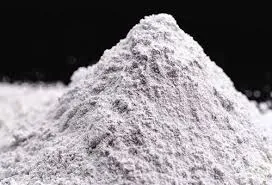
Dec . 09, 2024 15:51 Back to list
hpmc grades viscosity
Understanding HPMC Grades and Their Viscosity A Comprehensive Guide
Hydroxypropyl Methylcellulose (HPMC) is a versatile and widely used cellulose ether in various industries, including pharmaceuticals, food, construction, and cosmetics. One of the most critical aspects of HPMC is its viscosity, which significantly influences its application and performance. This article explores the different grades of HPMC and their viscosity characteristics, offering insights into how these properties affect their functionality.
What is HPMC?
HPMC is synthesized from cellulose, a natural polymer derived from wood or cotton. By reacting cellulose with propylene oxide and methyl chloride, HPMC is produced as a white, amorphous powder. Its unique chemical structure endows it with several properties, including water solubility, thickening capabilities, and film-forming abilities. Depending on the degree of hydroxypropyl and methyl substitution, various HPMC grades can be created, each with distinct viscosity levels.
HPMC Grades and Their Viscosity
HPMC grades are typically classified based on their viscosity in a specified concentration of an aqueous solution, usually measured in centipoise (cP). The viscosity can be influenced by the degree of substitution, molecular weight, and the concentration of HPMC in solution. Here’s a breakdown of common HPMC grades and their corresponding viscosity characteristics
1. Low Viscosity Grades (e.g., HPMC 100, HPMC 200) - These grades have a lower molecular weight and are generally used in applications where a thin solution is required. - Their viscosity ranges from 100 to 2000 cP when dissolved in water at a 2% concentration. - Common applications include tablet coating and as a binder in pharmaceutical formulations.
hpmc grades viscosity

2. Medium Viscosity Grades (e.g., HPMC 400, HPMC 750) - Medium viscosity grades fall between low and high viscosity categories. - They typically have viscosities ranging from 2000 to 5000 cP at a 2% concentration. - These are widely used in the formulation of gel products, personal care items, and in food processing as thickening agents.
3. High Viscosity Grades (e.g., HPMC 1500, HPMC 3000) - High viscosity grades are characterized by their ability to create thick, gel-like solutions. - With viscosities exceeding 5000 cP at 2%, these grades are ideal for applications requiring substantial thickening and stabilizing properties. - They are often employed in construction materials, such as tile adhesives and plaster, as well as in cosmetics to enhance texture and stability.
Factors Influencing Viscosity
Several factors might influence the viscosity of HPMC solutions
- Concentration Higher concentrations of HPMC lead to increased viscosity; therefore, selecting the appropriate concentration for each application is crucial. - Temperature Viscosity can decrease with an increase in temperature, affecting the performance of HPMC in certain applications. - Shear Rate HPMC exhibits pseudoplastic behavior, meaning its viscosity decreases under stress. Understanding this property is essential for applications involving mixing or pumping.
Conclusion
In summary, HPMC is an incredibly adaptable material widely utilized across various sectors. Understanding the different grades of HPMC and their viscosity characteristics is crucial for selecting the right grade for specific applications. Whether it is low, medium, or high viscosity grades, each has a defined role based on its properties. By carefully considering the factors that influence viscosity, manufacturers and formulators can optimize the use of HPMC in their products, ensuring desired performance and functionality. As industries continue to evolve, the demand for tailored HPMC solutions will likely grow, highlighting the importance of this versatile compound in modern applications.
-
Versatile Hpmc Uses in Different Industries
NewsJun.19,2025
-
Redispersible Powder's Role in Enhancing Durability of Construction Products
NewsJun.19,2025
-
Hydroxyethyl Cellulose Applications Driving Green Industrial Processes
NewsJun.19,2025
-
Exploring Different Redispersible Polymer Powder
NewsJun.19,2025
-
Choosing the Right Mortar Bonding Agent
NewsJun.19,2025
-
Applications and Significance of China Hpmc in Modern Industries
NewsJun.19,2025







